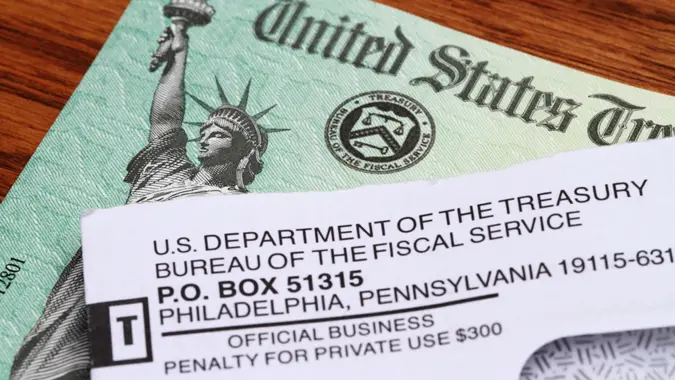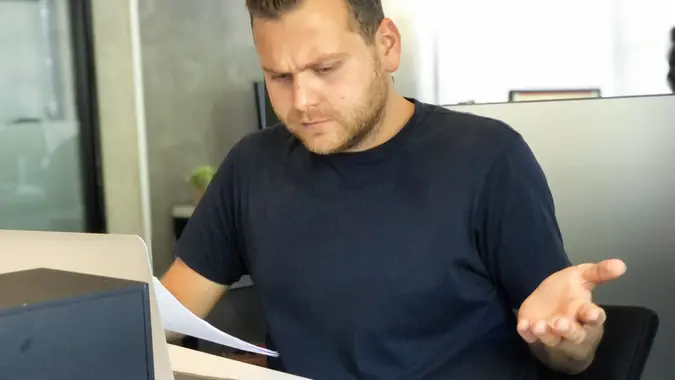7 Surprising Things the Upper Middle Class Does With Their Money

Commitment to Our Readers
GOBankingRates' editorial team is committed to bringing you unbiased reviews and information. We use data-driven methodologies to evaluate financial products and services - our reviews and ratings are not influenced by advertisers. You can read more about our editorial guidelines and our products and services review methodology.

20 Years
Helping You Live Richer

Reviewed
by Experts

Trusted by
Millions of Readers
They have money to burn, but the upper middle class might not be spending it as you imagine. You might think people in this income bracket spend all their extra cash on fancy cars, vacations and designer clothing, but that isn’t necessarily the case.
Generally speaking, a household income of approximately $150,000-$250,000 is considered upper middle class. However, this largely varies in different parts of the country, due to disproportionate costs of living in different geographical areas.
Just 14% of people consider themselves upper-middle class, according to a 2022 Gallup survey. Overall, a 2021 Pew study found that 50% of people identify as middle class, 29% as lower income, and 21% as upper income.
Ready to find out what the upper middle class is really doing with their money? Here are seven surprising ways they’re spending it.
Real Estate Investments
“The upper middle class often invests in additional properties, either as vacation homes or rental properties,” said Taylor Kovar, CFP, founder and CEO at Kovar Wealth Management. “This move not only provides a potential source of passive income but also diversifies their investment portfolio.”
He said members of the middle class might find the upfront costs and ongoing maintenance of real estate investments unaffordable.
Private Schools and Pricey Extracurriculars
Children are the future, and Kovar said many parents with ample funding opt to invest in them.
“Many in the upper middle class can afford to send their children to private schools or engage in expensive extracurricular activities,” he said. “They view this as an investment in their children’s future, providing them with enhanced educational opportunities and networks that might not be available in public schooling.”
In addition to providing their kids with a privileged childhood, this might improve their chances of getting into exclusive colleges and universities.
Maximize Contributions To Tax-Advantaged Accounts
“While available to anyone, the upper middle class is often more able to maximize contributions to tax-advantaged accounts like Roth IRAs, 529 college savings plans or Health Savings Accounts,” Kovar said. “Their higher disposable income allows them to take full advantage of these tools for long-term savings.”
This, of course, can set them — and potentially their children — up for continued financial success in both the short and long term.
Start Investing for Retirement Earlier
“With more resources at their disposal, the upper middle class can start investing for retirement earlier and more diversely, including in higher-risk/higher-return instruments,” Kovar said. “They might also invest in private equity or hedge funds — options not typically considered by the middle class, due to the higher minimum investment requirements.”
Saving earlier for retirement — and potentially more aggressively — can allow the upper middle class to continue their comfortable lifestyle in their golden years.
Complex Estate Planning
Members of this class have disposable income, and they’re not afraid to invest time and money to safeguard it.
“The upper middle class often engages in complex estate planning, including setting up trusts to manage and protect their assets,” he said. “These strategies help in tax minimization and ensuring a smooth transfer of wealth to future generations, which might not be as pressing or feasible for the middle class.”
Professional Money Management
“What we find as advisors is that the upper middle class often engage in sophisticated financial planning moves that may be challenging for others to replicate, or they just haven’t made the commitment to the right financial planning help,” said Matthew Silverhardt, private wealth advisor at Claire Reid Wealth Advisory.
He said making these moves can come with a serious payoff, but expert assistance is typically needed.
“The more money we earn often leads to more opportunities for it to grow exponentially,” he said. “With this opportunity often comes the realization that you will need help from an experienced group of financial professionals to make it happen.”
Professional Tax Planning
“We find that higher-income individuals also commonly invest in professional tax planning services involving accountants and lawyers,” Silverhardt said. “A luxury that may be financially out of reach for the middle class, but can have [a] significant long-term impact on your wealth.”
Without the right knowledge, he said you can only get so far on your own.
“While basic tax strategies remain accessible to everyone, the intricacies of certain structures may require a higher financial threshold,” he said.
Hiring high-level tax professionals likely isn’t cheap, but it can clearly be a savvy move for those who can afford it.
Clearly, the upper middle class knows a thing or two about money. Even if you don’t fall into this bracket, there are plenty of lessons to be learned from their spending habits.
None of the items listed above would be considered frivolous. Instead, these people are focused on money moves designed to ensure they — and their families — can continue to enjoy a comfortable lifestyle in the future.
 Written by
Written by  Edited by
Edited by 

























